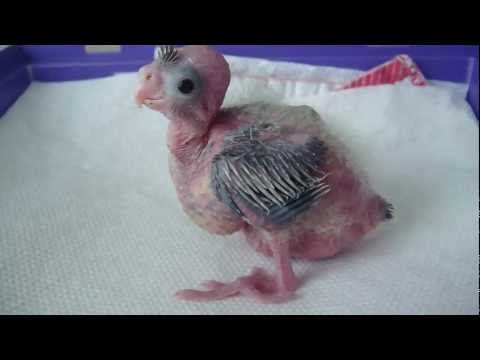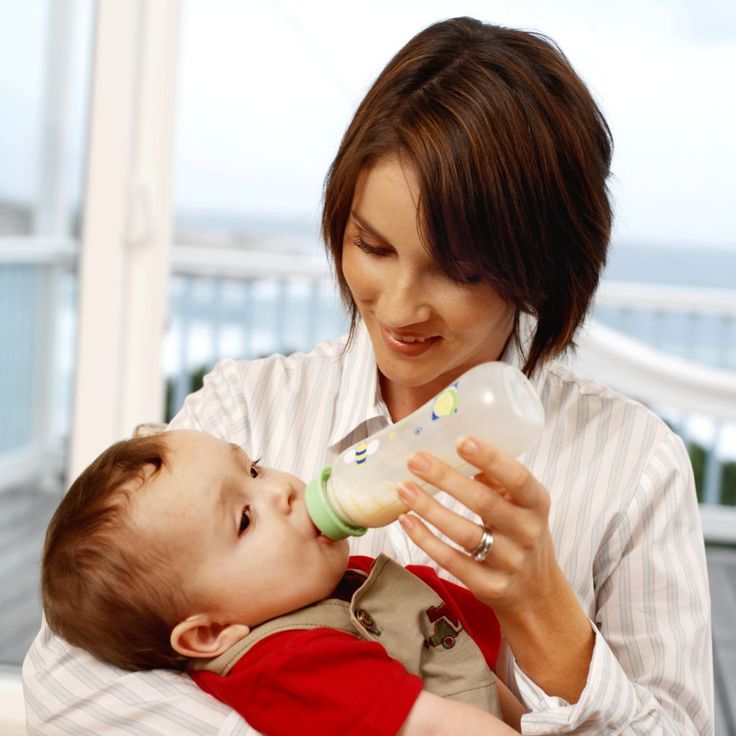Feeding a baby cow
Caring for Newborn Beef Calves Separated from Their Dams
Calves that are orphaned or abandoned at a very young age present a unique set of challenges on a cow-calf operation. These situations arise not only from dams dying at or shortly after birth, but also from behavioral or health issues that keep a cow or first-calf heifer from properly mothering her calf. Calves out of cows producing insufficient milk or born as multiples may need to be raised with special attention. In the dairy industry, calves are routinely separated from their dams at very young ages. The resulting calves are sometimes referred to as “bucket” or “bottle” calves.
Initial Calf Care Priorities
Colostrum Intake
The first priority in caring for a bottle calf is to ensure adequate colostrum intake. Timing of colostrum intake is particularly important, because the calf’s ability to absorb colostral antibodies decreases rapidly throughout the first day of life. Plan for calves to receive 5 to 6 percent of their body weight in colostrum within the first 6 hours after birth. Feed colostrum again 12 hours later. To ensure proper timing of these feedings, calving herds must be watched closely for new births. Observe newborn calves within the first few hours of life to ensure that they nurse their dams. If dams refuse to allow their calves to nurse or are physically unable to allow nursing, take immediate action to provide colostrum to newborns.
Fresh colostrum from the dam is best and may require restraining and milking the dam or allowing the calf to nurse the restrained dam. This can be accomplished in a squeeze chute with removable sides that allow access to the udder. In the case of orphaned calves, providing colostrum from another source is critical. If fresh colostrum is not available, then the preferred source of colostrum is frozen colostrum previously harvested from within the same herd. The next-best option is frozen colostrum from another herd. When neither fresh nor frozen colostrum is available, then substitute commercially available powdered colostrum. Have colostrum and newborn feeding supplies on hand before the start of the calving season. Otherwise, it may be difficult to acquire and administer colostrum in a timely manner.
Have colostrum and newborn feeding supplies on hand before the start of the calving season. Otherwise, it may be difficult to acquire and administer colostrum in a timely manner.
Naval Care
Naval care is another calving management practice that should receive priority. Apply iodine or a similar topical disinfectant to the umbilical cord of the newborn calf. Continue to observe the naval closely to make sure that it dries and heals. Watch for signs of naval ill or infection, such as swelling of the naval. These infections are more likely in muddy or wet calving areas. Naval ill can develop even when the naval is disinfected shortly after birth and ground conditions are dry. An infected naval typically appears swollen and may be painful to the touch. Treat an infected naval immediately. Consult a veterinarian for treatment protocols.
Protection
Provide calves with clean, well-ventilated pens and shelter from the weather. Calf hutches can be purchased or barn pens used to house bottle calves.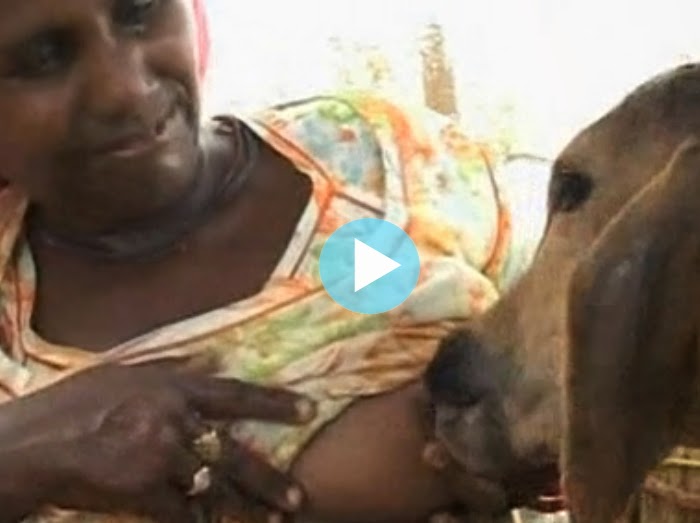 Individual penning can help prevent calves from sucking one another and reduce the spread of disease. It also facilitates individual monitoring of calf feed intake and feces consistency as signs of calf health. Allow 15 to 20 square feet of barn space for calves with access to an outdoor lot and 20 to 30 square feet of barn space for those without outdoor lots. Mississippi State University Extension Publication 2558 Beef Cattle Calving Management provides additional details about processing newborn beef calves.
Individual penning can help prevent calves from sucking one another and reduce the spread of disease. It also facilitates individual monitoring of calf feed intake and feces consistency as signs of calf health. Allow 15 to 20 square feet of barn space for calves with access to an outdoor lot and 20 to 30 square feet of barn space for those without outdoor lots. Mississippi State University Extension Publication 2558 Beef Cattle Calving Management provides additional details about processing newborn beef calves.
Very young calves raised on bottle or bucket feedings are generally more vulnerable to predators than heavier, older cattle. Without the close connection to a dam in the herd, bottle or bucket calves may separate themselves from the herd on a frequent basis. This leaves them vulnerable to predator attacks, and predators may be particularly attracted to the herd during calving season with the presence of afterbirth and new calves. Consider penning bottle calves in a more protected area such as a well-fenced pen with a mature cow until they grow to a size and thriftiness that allows them to better escape from or defend against predators. Extension Publication 2661 Predator Control on Beef Cattle Operations provides more information on this topic.
Extension Publication 2661 Predator Control on Beef Cattle Operations provides more information on this topic.
Feeding the Young Calf
For the first few months of life, bottle calves must be either artificially reared by humans on milk replacer diets or grafted onto nurse animals. These young calves are not yet mature ruminants, so they need a milk-based diet. A calf needs to consume approximately 8 percent of its birth weight in milk or milk replacer each day. Offer bottles twice daily in two equal feedings. Follow feeding directions on product labels. As the calf grows, keep the amount of milk replacer constant, but also offer calf starter feeds and good quality hay as its appetite increases. Make clean water available for the calf, as well.
Grafting to a Nurse Cow
Successful grafting of a calf onto the side of a lactating cow eliminates the labor and expense of bottle feeding. Besides providing a milk source for the calf, it also gives the calf protection from predators.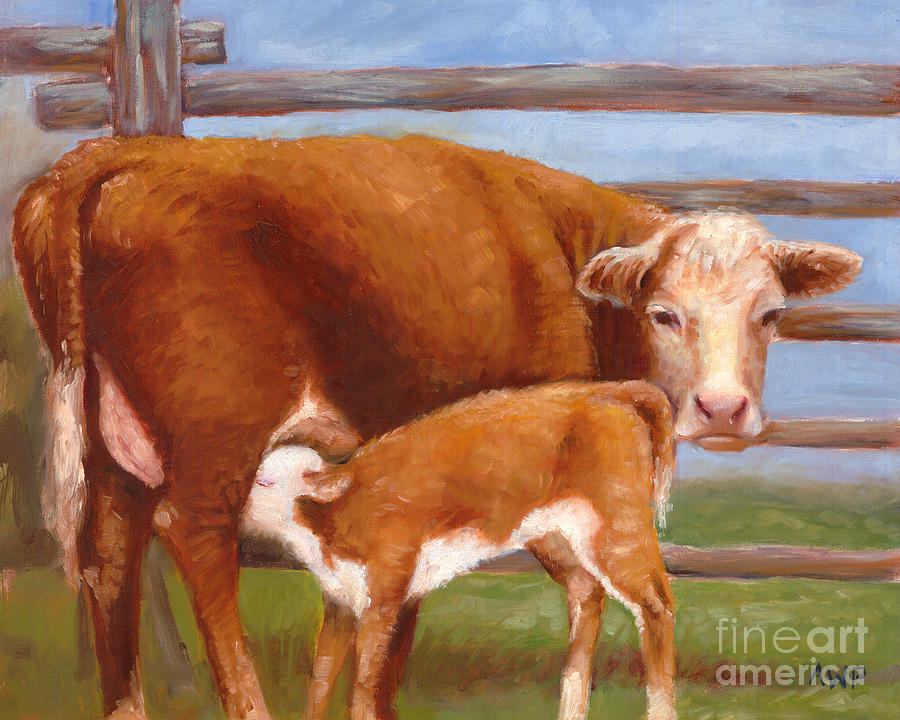 Grafting a calf onto a beef cow that has lost her calf or another nurse cow (often a dairy breed) purchased specifically for such use requires management and patience. Grafting may also be needed in cases in which the dam initially refuses to allow her own calf to nurse. This may be more common in females that calved for the first time or dams that gave birth to multiples.
Grafting a calf onto a beef cow that has lost her calf or another nurse cow (often a dairy breed) purchased specifically for such use requires management and patience. Grafting may also be needed in cases in which the dam initially refuses to allow her own calf to nurse. This may be more common in females that calved for the first time or dams that gave birth to multiples.
Start by penning lactating cows and newborn calves separately from the rest of the herd in a space that allows the calf to interact closely with the cow to which grafting is being attempted. Provide adequate shade and water in the pen, along with forages or other feedstuffs for the cow. For best results when introducing the cow and calf, do not bottle feed the calf to satiation immediately before trying to get it to suckle the prospective nurse cow. A tight-bagged (full-uddered) cow and a hungry calf are more likely to result in successful grafting.
When applicable, rub or tie the skinned hide (skin over the back along with the tail) of the nurse cow’s dead calf onto the grafted calf to transfer scent and encourage the cow to accept the new calf.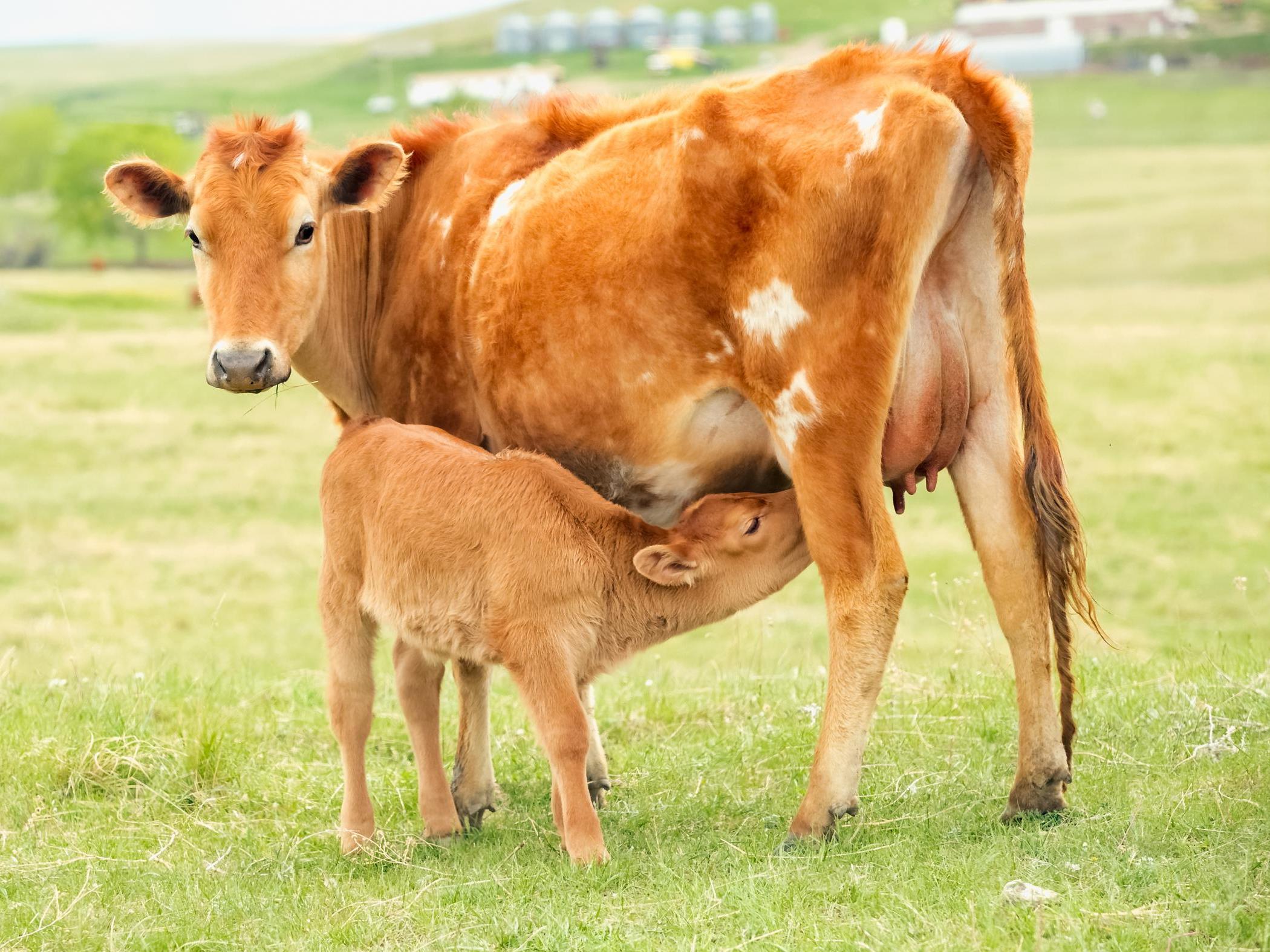 Afterbirth and commercial products consisting of synthetic pheromones also can help in grafting. Using these scents may be helpful during the first 2 to 3 days but not much after that period.
Afterbirth and commercial products consisting of synthetic pheromones also can help in grafting. Using these scents may be helpful during the first 2 to 3 days but not much after that period.
The cow and calf may be too distracted by human presence to nurse or bond when first introduced. Allow them time alone together without distraction, and then either observe them at a distance undetected or check them later for signs of nursing, including a full belly on the calf and slick teats or reduced udder filling on the cow.
Initially give the nurse female an opportunity to accept the calf without restraint, but do not wait too long for nursing to occur before relying on restraint. It is critical that newborn calves receive adequate colostrum and nutrients in early life. Also, dehydration is a risk that must be addressed through forced feeding situations if necessary. If the cow repeatedly kicks at or butts the calf and does not allow it to nurse when unrestrained, physically restrain the nurse cow in a squeeze chute with the bottom sides removed so the calf can nurse twice a day.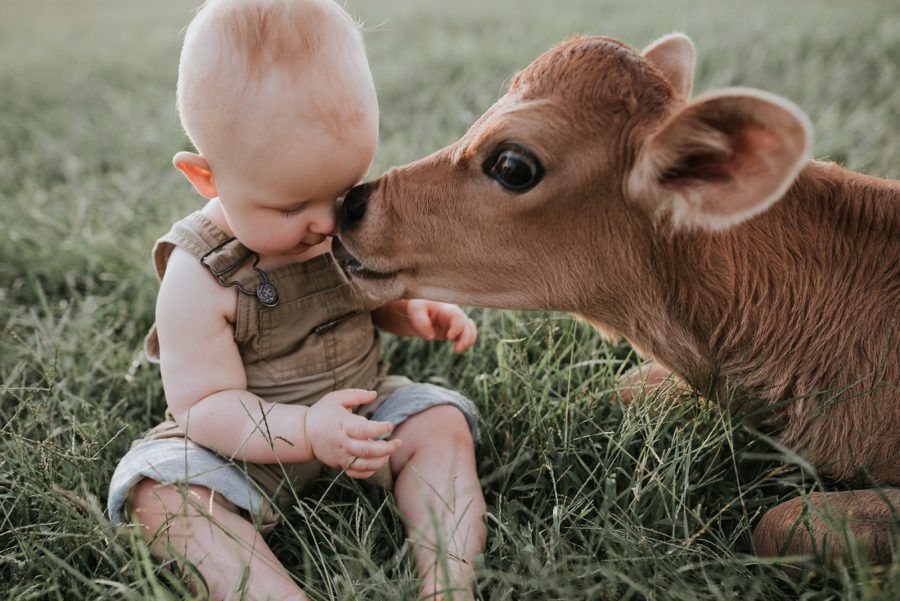 Repeat until the cow claims the calf willingly.
Repeat until the cow claims the calf willingly.
If the nurse female has undergone a difficult birth or is stressed from losing her calf, use extra care in handling her, and observe her closely for signs of distress or health problems. It is possible that even when a nurse female accepts a grafted calf, she may not lactate well enough to support the calf. In some cases, the cow may dry off (discontinue lactation). Do not assume that a suckling calf is getting adequate nutrients through nursing. Closely monitor the calf’s weight and condition, and supplement additional nutrients as needed.
Milk Replacer Diet
In the absence of a nurse cow, use a milk replacer that contains at least 22 percent crude protein and 15 percent fat. Mix milk replacer with warm water to better dissolve the product and make it more attractive to the calf. If a hot water source is not available close to the feeding site, use a thermos or other insulated container to transport warm water to the feeding site.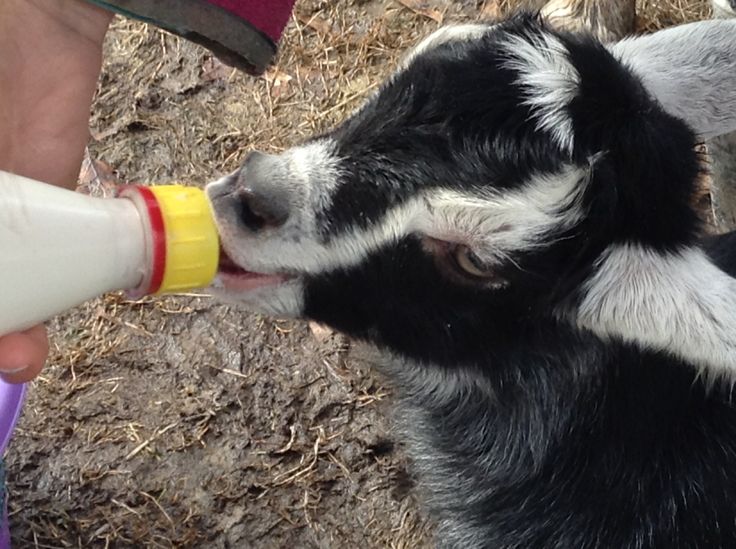 Then, mix the warm water and milk replacer powder together when ready to feed the bottle. Keep the temperature of the mix consistent between feedings and not more than 100°Fahrenheit. Also, use the same amount of milk replacer in the mix each feeding. Be sure to thoroughly mix the powder and water by stirring or shaking to dissolve all of the powder into the mixture.
Then, mix the warm water and milk replacer powder together when ready to feed the bottle. Keep the temperature of the mix consistent between feedings and not more than 100°Fahrenheit. Also, use the same amount of milk replacer in the mix each feeding. Be sure to thoroughly mix the powder and water by stirring or shaking to dissolve all of the powder into the mixture.
Use separate bottles for each bottle calf to limit risk of disease spread. Sanitize all feeding equipment after each meal. To protect human health, particularly that of susceptible young children, keep bottle feeding supplies out of human food preparation areas.
Although a calf may instinctively nurse its mother, it may need to be taught to drink from a bottle. Start by inserting one or two fingers into the calf’s mouth. As the calf begins to suck, insert the bottle nipple in its mouth. It may be necessary to straddle or stand beside the standing calf and support its head upward while the calf is backed against a solid fence, wall (corner is best), or vehicle.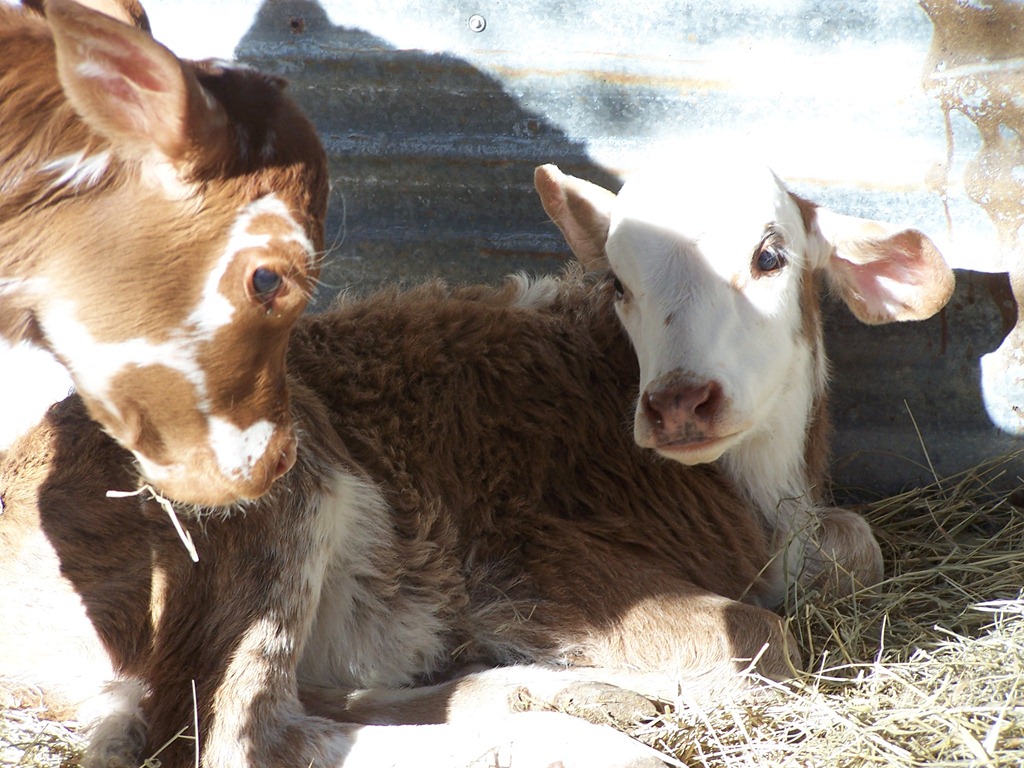 This head position will also help close the esophageal groove present in young calves and shunt milk past the rumen and directly to the abomasum (“true stomach”) instead.
This head position will also help close the esophageal groove present in young calves and shunt milk past the rumen and directly to the abomasum (“true stomach”) instead.
It may take a while to get lethargic or ill calves to actively suck a bottle. When possible, spend the additional time to get a calf started on a bottle before resorting to a forced infusion of feeding liquid. But, if a calf still refuses to take a bottle, a stomach tube (Figure 1), also known as an esophageal feeder, can be used to infuse milk replacer directly to the calf’s stomach. Take extreme care to ensure that the tube is in the esophagus and not the windpipe. Listen to make sure that breathing sounds are not coming from the tube. Sometimes, infusion of milk replacer into the stomach will stimulate a calf’s appetite. Weak calves may require smaller and more frequent feedings. Continue to monitor calves for signs of unthriftiness such as poor growth, scours, and a “pot-bellied” appearance. Have a scours prevention and treatment plan in place based on the advice of a veterinarian familiar with the operation. Extension Publication 2551 Identifying Sick or Injured Cattle provides additional insight about monitoring calves for illness.
Have a scours prevention and treatment plan in place based on the advice of a veterinarian familiar with the operation. Extension Publication 2551 Identifying Sick or Injured Cattle provides additional insight about monitoring calves for illness.
As calves become used to drinking from a bottle twice a day, they may anticipate feedings and aggressively pursue the bottle. These calves become accustomed to humans feeding them. Although bottle calves are often considered tame or docile, the bottle handler needs to be careful of being head butted by the calf. This becomes more of a safety concern as the calf gains stature and weight over time. A wire bottle holder can be used to attach a filled bottle to a fence to keep the handler from having to hold the bottle during feeding. Be sure to remove the bottle from the calf when emptied to prevent the calf from sucking excess air into its gut.
Bucket feeding of milk replacer is also possible, but take precautions to keep calves from stepping in and knocking over buckets. Make sure that buckets are not too tall for calves and are secured. To teach bucket feeding, place fingers moistened with milk into the calf’s mouth as described earlier. As the calf begins to suck, gently lower its mouth into the bucket of warm milk. Keep its nostrils clear of the liquid. Repeat as needed until the calf drinks on its own.
Make sure that buckets are not too tall for calves and are secured. To teach bucket feeding, place fingers moistened with milk into the calf’s mouth as described earlier. As the calf begins to suck, gently lower its mouth into the bucket of warm milk. Keep its nostrils clear of the liquid. Repeat as needed until the calf drinks on its own.
Transition to Solid Feeds
By 3 weeks of age, calves should be able to digest small amounts of solid feeds. Make sure feeders are not so high or deep as to be difficult for calves to reach the feed. Calf starter feeds should be dust-free, highly palatable feeds containing 75 to 80 percent total digestible nutrients (TDN), 15 to 20 percent crude protein, and adequate minerals and vitamins. They should be coarsely ground, rolled, or pelleted to facilitate feed intake and rumen development. Calves can be adapted from starter to grower rations at around 4 months of age.
After the calf finishes each milk replacer meal, place a small amount of solid feed in its mouth to encourage feed tasting. Keep small amounts of dry, fresh feed in a feed box or tub in the calf’s pen. At first, calves will consume only about a fourth of a pound of grain per day. This will increase to about 2 to 3 pounds of starter feed by 3 months of age and approximately 3 to 5 pounds of feed at 6 months of age. Do not feed more than a calf will clean up in a day to avoid leaving stale or moldy feed.
Keep small amounts of dry, fresh feed in a feed box or tub in the calf’s pen. At first, calves will consume only about a fourth of a pound of grain per day. This will increase to about 2 to 3 pounds of starter feed by 3 months of age and approximately 3 to 5 pounds of feed at 6 months of age. Do not feed more than a calf will clean up in a day to avoid leaving stale or moldy feed.
Hay or pasture consumption encourages rumen development. Hay should be high quality and offered free choice. Provide limited exposure to green pasture, greenchop, or silage until calves are 6 months of age, because excessive feeding of these high-moisture forages to young calves can limit dry matter and nutrient intake.
Weaning Young Calves
Calves can be weaned at 4 to 8 weeks of age if eating well (1½ to 2 pounds of starter feed daily). Wait longer to wean less vigorous calves or calves that still have low grain intake. Extension Publication 2555 Early Weaning Beef Calves provides detailed information on this topic. Gradual weaning reduces calf stress as discussed further in Extension Publication 2578 Beef Calf Preconditioning Programs. Do not change up other aspects of the calf’s routine when weaning a young calf from milk.
Gradual weaning reduces calf stress as discussed further in Extension Publication 2578 Beef Calf Preconditioning Programs. Do not change up other aspects of the calf’s routine when weaning a young calf from milk.
Make sure that weaning records reflect the correct contemporary group status of the calf. It is not fair to compare weaning weights for an orphan calf receiving milk replacer to those of other calves raised by their own dams. Most breed associations have special weaning codes to account for this.
Conclusion
Raising a bottle calf requires patience and attention to care. It may take several days or even weeks of good management to get a bottle calf well on its way to surviving on its own. Close management of calf nutrition and health are keys to successfully raising a bottle calf. For more information about beef cattle production, contact your local county MSU Extension office or visit Extension's livestock beef site.
Publication 2810 (POD-12-19)
By Jane Parish, PhD, Professor and Head, North Mississippi Research and Extension Center.
Copyright 2019 by Mississippi State University. All rights reserved. This publication may be copied and distributed without alteration for nonprofit educational purposes provided that credit is given to the Mississippi State University Extension Service.
Produced by Agricultural Communications.
Mississippi State University is an equal opportunity institution. Discrimination in university employment, programs, or activities based on race, color, ethnicity, sex, pregnancy, religion, national origin, disability, age, sexual orientation, genetic information, status as a U.S. veteran, or any other status protected by applicable law is prohibited. Questions about equal opportunity programs or compliance should be directed to the Office of Compliance and Integrity, 56 Morgan Avenue, P.O. 6044, Mississippi State, MS 39762, (662) 325-5839.
Extension Service of Mississippi State University, cooperating with U.S. Department of Agriculture. Published in furtherance of Acts of Congress, May 8 and June 30, 1914. GARY B. JACKSON, Director
GARY B. JACKSON, Director
Home - Our Co-op
By Candice Johns with MannaPro
Feeding schedule
Most calves need only need 2–3 bottles a day. You won’t have to worry about middle-of-the-night feedings or early-morning waking; bottle calves eat during the day and sleep at night. They will need only two bottles a day if they are healthy, and the weather is nice. If it’s particularly cold or your calf isn’t gaining weight, three bottles will do.
- Watch for scours (more on that in a minute)
- Provide pasture, water, forage (after weaning is most typical), good-quality hay, and a clean environment
- Provide a free-choice calf-starter such as Calf-Manna® by Manna Pro® (if desired)
- Offer a good mineral program
Scours
I’m pretty sure our bottle calves would literally eat themselves to death if given the opportunity.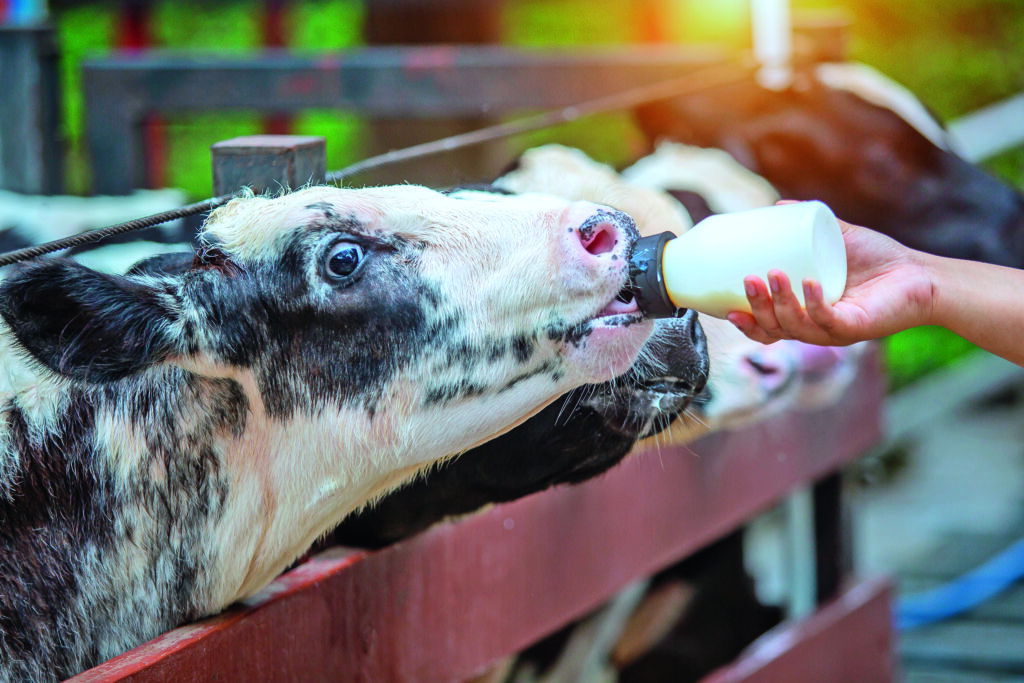 Their voracious appetite can result in what are known as calf scours or scouring.
Their voracious appetite can result in what are known as calf scours or scouring.
Calf scours are basically baby cow diarrhea. This condition is dangerous and can be fatal. Be sure to watch your bottle calves closely (especially their stool) to be sure they are healthy.
If your bottle calf has access to a lactating dairy cow, they could face a higher probability of overfeeding. Some mama cows will be happy to “adopt” your new calf. Even when our calves are being well fed (three bottles a day), they may still run to the milk cows in search of a free meal. Don’t count on a full belly to tell your little one to stop eating. Manna Pro has a new product that supports digestive upset: Calf Care™.
If you suspect calf scouring in your herd, contact your veterinarian. Scours can be dangerous for calves (especially very young ones) and needs to be treated.
Fences are friends
If you have ever watched a calf nurse from a mama cow, you probably saw them banging their head into her udder. This is normal behavior that stimulates the udder to “let down” additional milk for the hungry calf. This head-butting doesn’t hurt the mama cow, but during bottle feeding it can be annoying.
This is normal behavior that stimulates the udder to “let down” additional milk for the hungry calf. This head-butting doesn’t hurt the mama cow, but during bottle feeding it can be annoying.
Calves don’t seem to realize that head-butting the bottle will not make the milk come out any faster, nor will it make any more milk appear. You may find it helpful to position yourself on the other side of a gate or fence while feeding, which can help minimize head-butting.
When the bottle is empty, make your exit — quickly
When the bottle is empty and feeding time is over, give your little guy (or gal) a scratch, pat them and tell them they’re adorable, and then make your escape — fast, especially if you did not listen to tip #4 and are standing in the field with them.
Why?
Feeding my little bottle calves can be the highlight of my day. They are so excited. They greet me with the sweetest “moooo” you’ve ever heard. They love their bottles and have the enthusiasm of a puppy.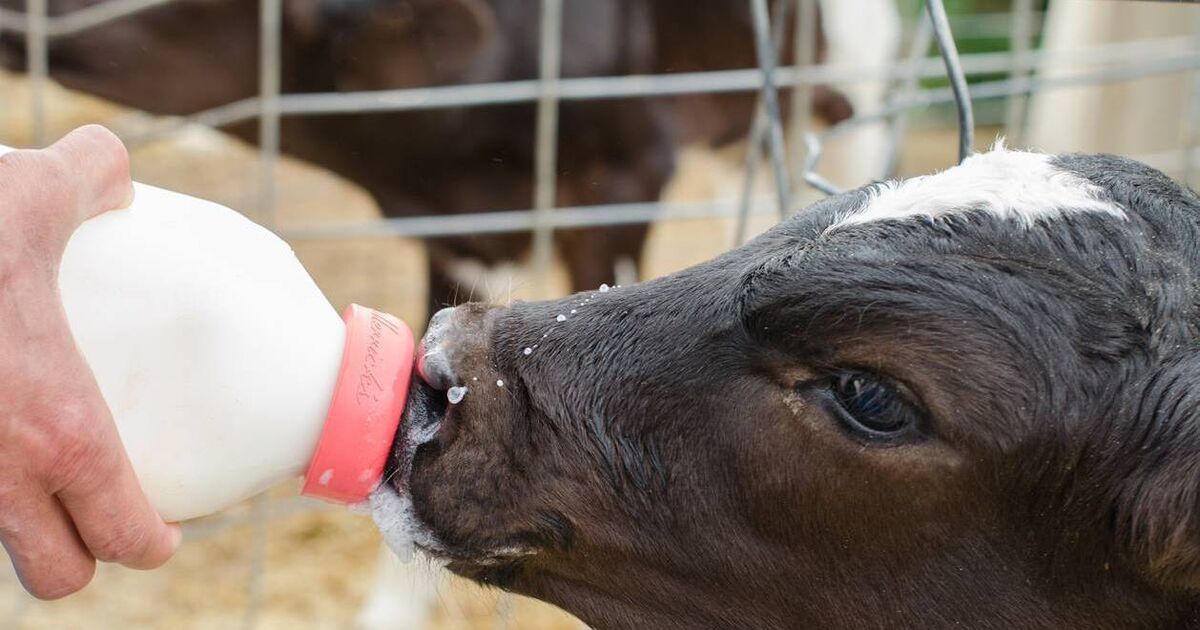 Calves may be the cutest animals in the world
Calves may be the cutest animals in the world
That is, unless it’s raining, pouring, sleeting, or icing outside. Then it’s not as fun. The calves are just as adorable, grateful, and spunky, but I am not as enthusiastic about the whole thing.
This is why you may need to run after feeding them their bottle. As soon as our calves finish their bottles, they immediately start looking for an udder. If a lactating dairy animal isn’t in plain sight, the calves may turn to the person holding the bottle — nudging, bumping, and smearing their soaking wet, milky, slobbery heads all over the front and back of my jeans trying to find an udder.
Bang. Nudge. Bump. “There’s got to be one here somewhere.”
“No, Norman [that’s the calf], I don’t have an udder.”
Raising bottle babies is a fun adventure. If you have always wanted to get into the cattle business but get indigestion when you see cattle prices, a bottle calf may just fit the bill. It’s probably one of the easiest, most inexpensive ways to get into the cattle business. Raising bottle calves will not only get you a herd “on the cheap,” but you’ll also make some great memories.
Raising bottle calves will not only get you a herd “on the cheap,” but you’ll also make some great memories.
How to feed cows. - Agromoltekhnika Sibir
Complete feeding of a cow is the key to its high productivity, since in case of insufficient feeding of the animal, a decrease in milk yield by up to 50% is observed, and with a prolonged lack of protein, the cow's live weight and protein content in milk decrease.
It is preferable to feed cows with voluminous feed, which is divided into coarse, juicy and green. In addition, the diet of animals includes concentrated feed (mixed feed, cake, grain waste, turd, meal) and vitamin and mineral supplements, food waste to increase milk yield.
Roughage.
Hay occupies a significant place in the diet of cows. It is recommended to feed animals no more than 10 kilograms per day, the annual norm of hay for feeding one cow is 25-30 centners. It is important to monitor the quality of hay, as in winter it is one of the main sources of sugar and protein for cows.
It is important to monitor the quality of hay, as in winter it is one of the main sources of sugar and protein for cows.
Chaff and straw are much lower in nutrition than hay. The daily feeding rate for one cow is 5-6 kilograms, the annual norm is 500 kilograms. Chaff and straw are eaten by cows very well, especially if they are pre-prepared (chopping, liming, steaming, adding concentrated feed).
Haylage has an average nutritional level. Haylage is made from dried up to 55% herbs. The rate of feeding one cow with haylage is 8-12 kilograms per day, the annual rate is 18-20 centners.
Succulent food.
Silage is a complete succulent feed. It is made from sunflower, grass of natural pastures, corn, tops of root crops and tubers. It is recommended to feed 15-18 kilograms per day to one cow, the annual rate is 40-45 centners per cow.
Root crops are dietary foods that contain a lot of water.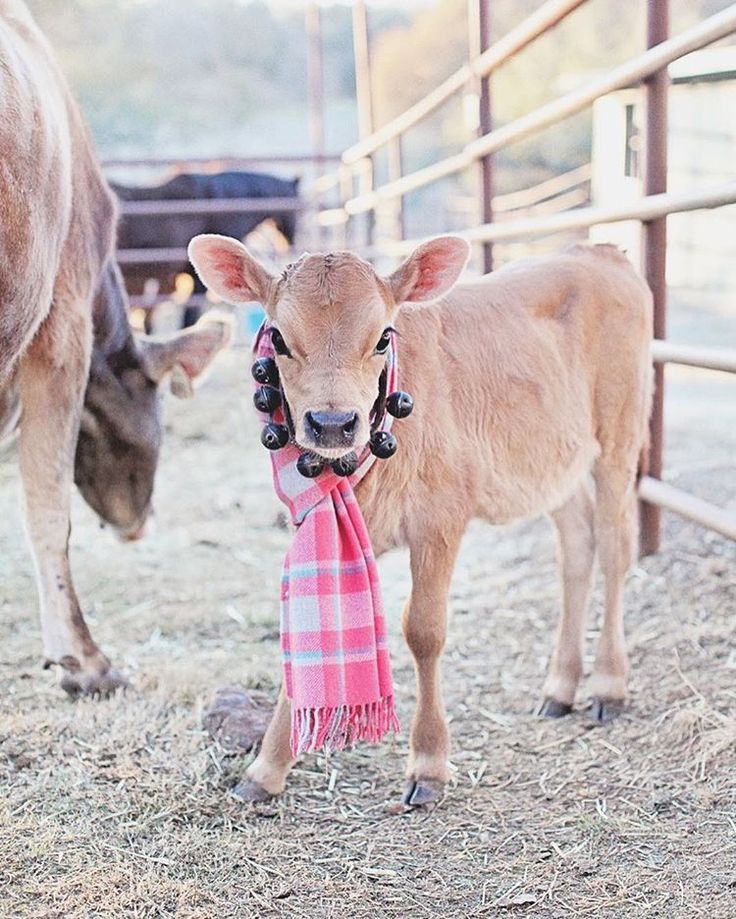 These are Jerusalem artichoke, carrots, sugar and fodder beets. They are fed to the cow along with roughage. The norm of feeding a dairy cow per day is: fodder beet - 15-20 kilograms, sugar beet - 5-8 kilograms, carrots - 10-15 kilograms. The annual rate of root crops per cow is 20-25 centners. It is worth noting that carrots contribute to the production of high-quality milk and dairy products. Cows should be fed with beets that were harvested a few weeks ago, otherwise, freshly picked root crops can provoke indigestion in cows.
These are Jerusalem artichoke, carrots, sugar and fodder beets. They are fed to the cow along with roughage. The norm of feeding a dairy cow per day is: fodder beet - 15-20 kilograms, sugar beet - 5-8 kilograms, carrots - 10-15 kilograms. The annual rate of root crops per cow is 20-25 centners. It is worth noting that carrots contribute to the production of high-quality milk and dairy products. Cows should be fed with beets that were harvested a few weeks ago, otherwise, freshly picked root crops can provoke indigestion in cows.
In addition, absolutely all root crops must be washed and cleaned before being fed to cows. Since the consumption of dirty fruits in animals reduces milk productivity, earth and sand accumulate in the proventriculus and incisors are erased. Feeding cows with raw potatoes contributes to a significant increase in milk yield. Before feeding, it should be crushed, as medium-sized tubers can clog the esophagus. The rate of potatoes per day per cow is 10-12 kilograms, the annual need is 5 centners.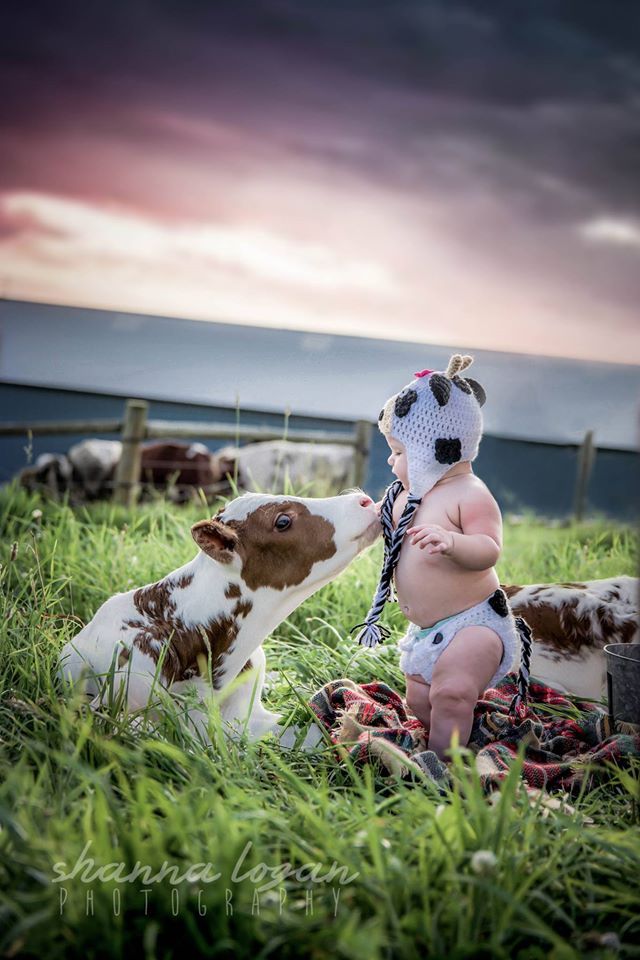
Gourds are fed to cows together with concentrated or roughage, pre-chopped. The norm of feeding a cow per day is 10-15 kilograms, the annual norm is about 1.5 centners.
Green food.
Pasture grass is the most complete feed for cows. In the summer, animals are able to extract it themselves on pastures; a day, one cow eats up to 100 kilograms of green fodder. This type of feed is very well digested, and also increases productivity and improves the health of the animal.
Concentrated feed.
Used in feeding cows to equalize energy and protein in the diet. They are fed, as a rule, in a flattened or coarsely crushed form. The daily rate of consumption of this type of feed is calculated based on the amount of milk yield of a cow.
Feed grains (wheat, oats, barley) most important for feeding cows. They serve as an additional source of energy.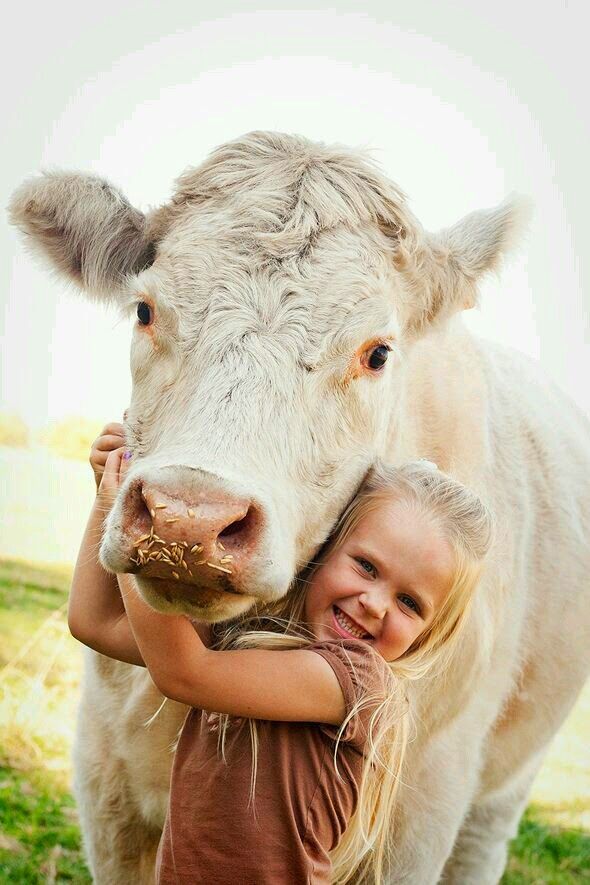
Barley is the best grain for feeding cows due to its high energy value. Barley turd is recommended to be fed during pregnancy and during lactation.
Oats are suitable for both dairy cows and young animals. Oatmeal is served to animals in the form of porridge or simply dry. The ideal combination of forage grains: 2/3 barley, 1/3 oats. When feeding cows with grain mixtures, the quality of the grain should be monitored very carefully, since a moldy feed mixture is very dangerous for the health of the herd. If desired, bran is added to such food.
Cakes and meal are distinguished by high content of protein and fats. The feeding rate per cow is no more than 4 kilograms per day, the annual rate is up to 4 centners per head.
Production waste is also widely used for feeding cows. Bran and flour dust contain a lot of phosphorus and fiber, the daily norm is 1-5 kilograms. Beet pulp (raw), bard and spent grains are mixed with roughage and chalk. In no case should the daily norm exceed 15 kilograms.
In no case should the daily norm exceed 15 kilograms.
The use of vitamin and mineral feed is necessary in order to fully develop the genetic potential of milk production.
The following foods contain vitamins: Jerusalem artichoke, carrot, dry nettle, cabbage, fish oil, concentrated yeast feed, etc.
In addition, it should be remembered that a cow should always have table salt (up to 60 grams per day) and lick salt in the feeder.
Precisely balanced complete feeding contributes to the normal course of all processes in the cow's body, increasing productivity and milk quality.
Feeding dairy cattle: daily nutritional norms and what feed additives are included in the diet - Tips and features
Dairy farming implies properly organized cattle care and balanced nutrition. Adhering to all the rules, you can achieve about 8-10 liters. products for each milking from the best individuals.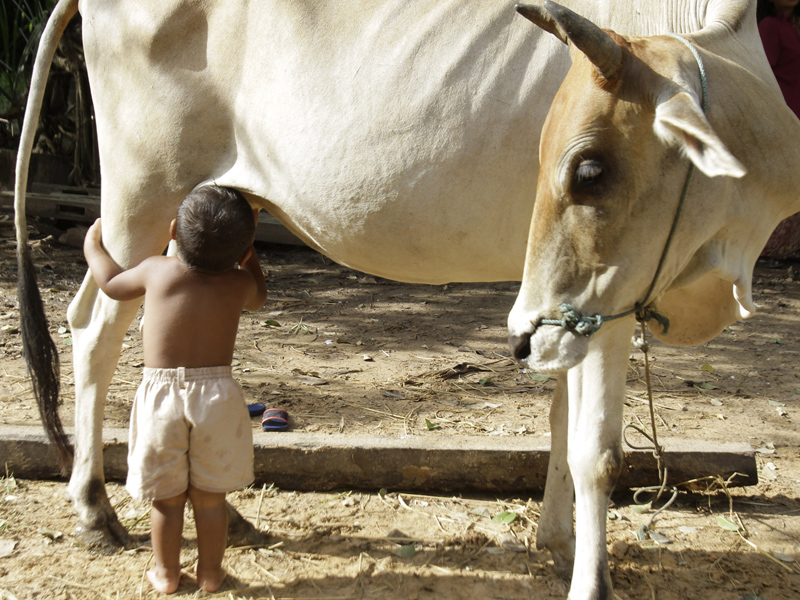
Feeding norms for cattle
In order for a dairy cow to give a large amount of production every day, she is fed not only grass and hay. Optimal nutrition in this case consists of different types of feed. For the health of the animal, every day he needs to provide wet and dry food and all the necessary supplements.
Foods are distinguished according to the method of production:
- animals;
- vegetable;
- combined;
- supplements with vitamins and minerals.
The main components of the diet of cattle are plant foods, which include 4 types:
- Juicy. This is grazing in the meadow, haymaking, various vegetables, any pumpkin, in winter - silage. These products provide cows with protein and fiber.
- Rough. Mostly it is dry haylage or straw. They are rich in vitamins and the same fiber. Along with grazing and root crops, roughage is the staple food for cattle.
- Concentrated.
 These are cereals, cake, bran, coarse grains. By giving such additives, you saturate the body of livestock with proteins and carbohydrates.
These are cereals, cake, bran, coarse grains. By giving such additives, you saturate the body of livestock with proteins and carbohydrates. - Feeds of animal origin. These are additives from fishery waste, meat processing plants. They are the only source of amino acids needed by the animal. Meat, blood and fish meal make the diet of cattle balanced in terms of micro and macro elements.
What to feed a dairy cow
High-yielding cattle move very slowly and are very calm. In one day, a cow can eat up to 100 kg. hay and give out up to 25 liters. milk.
The diet of an average individual may consist entirely of large amounts of fresh grass or hay, with a small addition of carbohydrates and protein. But cows with a high level of milk yield need a diet rich in proteins, minerals, proteins. Such food makes it possible to obtain very fatty milk.
The nutrition of such cows should be the following elements in the right amount:
- high quality natural food;
- grass, hay, roots;
- mineral and vitamin supplements;
- buttermilk, flour and whey from dairy, meat and fish waste;
- concentrates;
- products of chemical origin and biosynthesis.

What to feed dairy cattle in winter?
Winter grazing is not available, it is replaced by wet (vegetables, silage) and dry (straw, hay) products.
In addition to the feeds mentioned above, the cow must also eat concentrates. Each unit of cattle per day should eat 10-12 kg. stern. In order for this amount of food to be well absorbed, it is divided into 5-6 meals per day.
The main portion of concentrated food in the cold period is fed to the cow after milking. It is impossible to use silage without other food, it must be combined with roughage.
Also, you can not feed the same silage for a long time, you need to combine different types of feed (silage from sunflower, rapeseed, sorghum, Jerusalem artichoke). Otherwise, the use of any one type of food for 1-1.5 months will lead to a digestive upset in the animal.
In addition to roughage per meal in winter, a cow must receive:
- at least 3 kg of fodder beet;
- at least 1 kg of concentrated feed;
- 1 kg pulp.
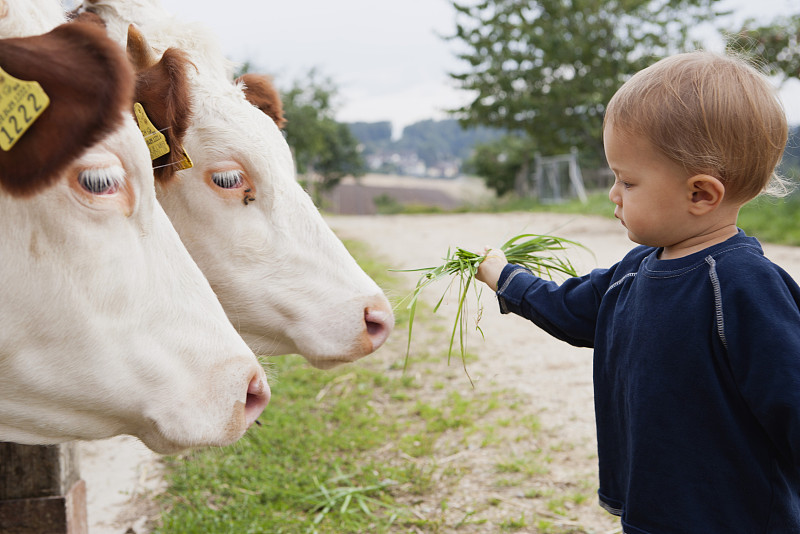
How to replace the silo?
Alfalfa haylage can sometimes be used. It has a beneficial effect on milk production. You can also yeast a little dry grass. They do it this way: the hay is crushed, steamed in hot water, yeast is thrown there and the mixture is kept in a warm place for 12 hours.
Tricalcium phosphate in the diet of cattle. How to apply?
This feed additive improves the digestibility of basic feeds. The body of cattle is healthy, resulting in better quality and quantity of milk. Each animal should receive food with a balanced amount of phosphorus and calcium, in which case there will be no overexpenditure of other additives, as well as an overdose of individual components.
If there is a lot of phosphorus, feed costs increase, cows' productivity will decrease. Tricalcium phosphate in animal bone maximizes nutritional efficiency.
There are some rules for using this supplement:
- use the mixture only in cases of acute vitamin deficiency, for example, in spring;
- each animal at this time receives 80-100 kg.
 additives;
additives; - the feeding period lasts at least one and a half to two months, a single consumption of food will not bring results;
- the dietary supplement is mixed with water and only then added to the main food.
Milk-producing cows need this drug because a significant amount of calcium is lost from the body during lactation.
Diet of dairy cows
Dairy breeds of cows eat differently in one or another period of development. Each of them should be given attention, taking into account the period of pregnancy and lactation.
Nutrition of cattle during the 1st lactation period
At the time when the pregnancy comes to an end and the first milk appears, the cow's metabolism changes significantly. Most of all between 20 days before the birth of the calf and 20 after.
In the last 20 days of the 1st lactation period, cows eat up to 4 kg. concentrate per day. Thanks to this, cows get used to the new taste of food, and the body receives energy reserves.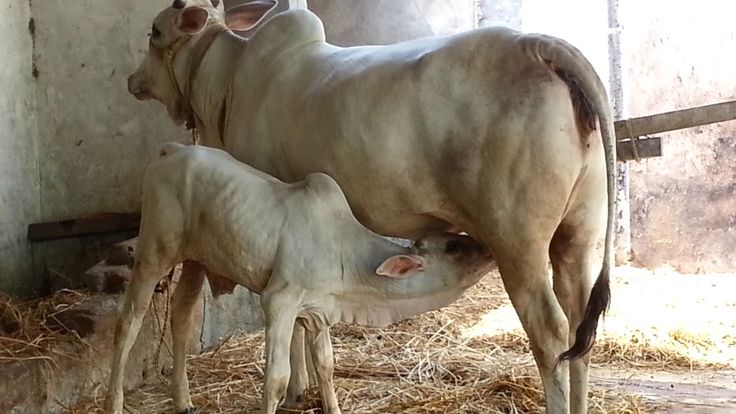
Nuances of nutrition during the 1st lactation period:
- immediately after giving birth, the cow is given warm slightly salted water;
- they feed her not with fresh grass, but dried or dry;
- two days in a row she is given 1.5 kg each. concentrates. It can be wheat bran, sunflower meal, compound feed. From all this they make porridge and so they feed;
- only on day 4 a cow can eat juicy grass and vegetables;
- 2 weeks after birth, animals are transferred to the diet of dairy cows, taking into account the performance of each;
- young individuals should not be given a lot of new feed - udder diseases may occur.
Nutrition during milking
After the birth of a calf, proper feeding of the cow is of great importance, her productivity depends on it. These are the ground rules:
- The future diet is made up taking into account the amount of milk received. If it arrives, then the food for the mother is made up according to the actual milk yield.
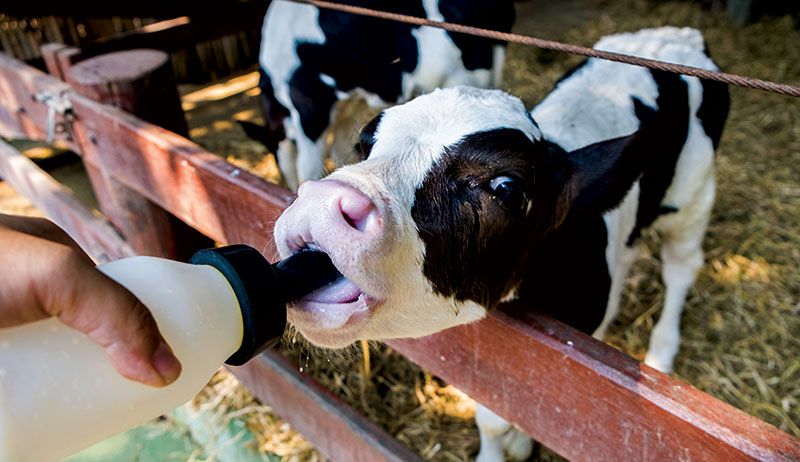
- For top dressing use feeds that are easily digested and have energy value (concentrates and vegetables).
- Such energy-intensive feeds are given gradually so as not to harm health.
- Bait is especially important in the 3rd month after calving, because at this time the body spends a lot of useful substances.
In the first 2 months, a cow that has given birth cannot consume the usual amount of roughage, despite the fact that the body uses protein and fat reserves to produce milk. At this time, it is especially important to pay attention to the diet so that cows do not lose weight more than half a kilo per day.
Diet for high-yielding individuals
For individuals that give a large amount of milk, make up a separate diet during the feeding of the calf.
Cow weighing up to 500 kg, giving up to 17 kg per day. milk, eats the following amount of feed:
- hay - 6 kg;
- fodder beets - 5 kg;
- silos - 30 kg;
- sunflower cake - 1.
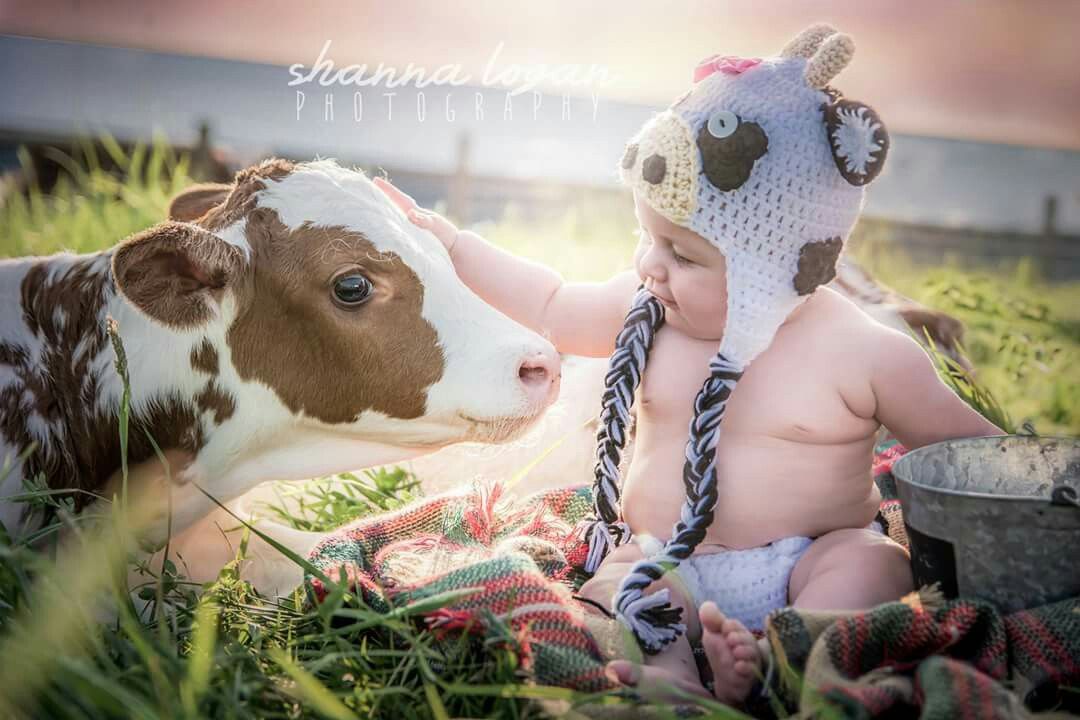 5 kg;
5 kg; - crushed barley - 1 kg.;
- bran - 700 g;
- water - at least 40 liters.
Divide the amount of food per day into 3 portions. All food is not given because the animal chews it, and saliva drips onto the dry food. It starts to smell sour and the cow won't want to eat it anymore.
Norm per dairy cow
To derive the exact feed rate for dairy cattle, one must proceed from the weight of the animal, life expectancy and milk production. For a young animal (no more than 2 years old), another 10% of feed is added to the main daily diet.
When calculating, a special value is used - a feed unit.
How much food does a cow need per day?
An average-sized individual eats about 15 kg of hay every day (this is up to 5 kg of feed per 100 kg of weight). If it is straw, then 5 kg. per day, haylage - 12 kg., Silage is 3.5 kg.
Those farmers who feed potatoes or beets know that 15-20 kg of these vegetables are consumed, carrots - up to 10 kg.


